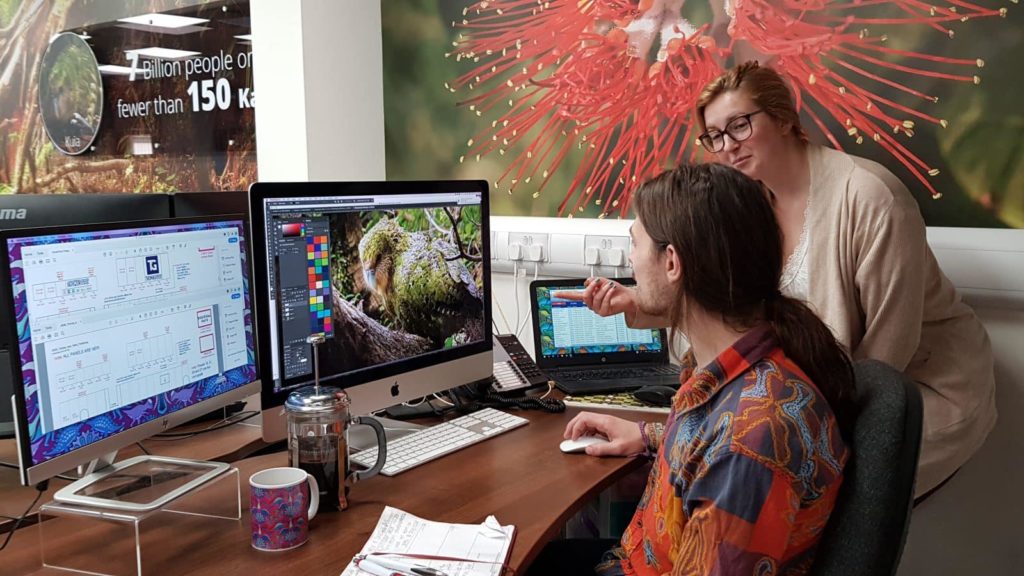SPONSORED CONTENT
Written by Alan Jenkins, founder and CEO of Quadrant2Design
Lock-downs have forced many exhibition and event organisers, to look to the digital space for new ways of carrying on. The ‘virtual exhibition’ is one such effort, and its contradiction in terms, perfectly encapsulates why most digital events fall flat on their face.
There’s no escaping human biology
Inevitably we are human, social creatures. When you go to an exhibition; you are committing to an exciting group experience, that we call an ‘event’. Whether you go with a team of coworkers, superiors, or other interested parties, all of you are now psychologically ‘invested’ in this event.
You’ve looked forward to this exhibition, made travel plans with your colleagues and talked about lunch in the little indian restaurant near the exhibition hall. You may even be looking to spend some time with that nice guy in marketing!
Whatever your motivation, whether social or professional, and usually a mixture of both, you’re looking forward to visiting a ‘live’ event, and mixing with real people. The event is a ‘happening’ that takes place over a limited period of time, and exists within a venue that you must physically travel to.
The word ‘event’ derives from Latin ‘evenio’, meaning to come out, or to occur. People have to ‘come out’. Once they have passed the hurdle of successfully arriving at the event, each individual is now committed to spending time there, and from that, one-to-one interactions will arise.
People will talk amongst each other, people will say, ‘right, we’re here now, might as well make the most of it’. Interactions will arise, connections will form, and relationships strengthen. People will see and discover things they are interested in and that they will find helpful.
Depending on the scale of the event, there may be interesting or comical arrangements made to pique the interest of attendees. You might end up playing table football with a bloke dressed as a panda. You might go for drinks afterwards and have an interesting conversation with your boss. You might not. But again, all of this potential arises out of the fact of people gathering together and collectively committing a portion of their time to this event.
People have agreed to stay at this location for a while, and all the chaos and unpredictability that each of them brings, will inevitably spark some intrigue and unforeseen happenings. The ‘stuff of life’. None of this can be experienced in a virtual environment.
And then of course, there is the sheer colour, vibrancy and presence of the exhibition stand architecture at a real event. Andrew Carney is the Creative Director of Black Robin Exhibits,
“a great exhibition stand gets noticed. And the way we do that is by combining strong branding, beautifully designed graphics, impactful product displays and digital display, into one ‘unmissable’ presence. You can’t replicate that with virtual”.
But there must be a way!
Now, if you’re an enterprising individual, you might think: well, since the whole Covid thing we’re not supposed to hold these events anymore, but maybe… if only we could find a way around the regulations. I’ve got it! All we need to do is make it digital. Take the exhibition, and replicate it as best we can within the digital space!
Not so fast, chum. By making it digital, you have fully uprooted the exhibition from its mooring within physical space-time. Once you have plucked the exhibition out of this real-time context you have inexorably changed the nature of the beast. People can’t go there, people are no longer forced to spend time there, people are no longer there at all.
There is no forced engagement of human interaction — nothing has to arise from it. There is no ‘putting a face to the name’ and no sparking of new relationships, that comes with a real event.
Event + digital = a non-starter
Putting exhibitions to one side, scarce few human experiences can be translated with ease to digital. Many companies have tried to hold digital gatherings. Generally speaking, they don’t work. Digital night clubs? Laughable. The fact is that in our current stage of technological development, there is simply no substitute for live interactions.
There is simply no excitement generated by clicking open a new tab on your browser to join a virtual exhibition. There is simply no buzz; you’re not with your colleagues, you’re not meeting real people, and you’re simply not engaged with the ‘non’ event.
It may be that in decades to come, leaving the house will become a bizarre notion, and we’d all far sooner throw on a VR headset and join our friends for some drinks at a well-established digital meeting-space (Bionic Ben’s bar and grill?).
But are we anywhere near this yet? And if the pandemic has taught us anything, surely it’s that people desperately need human interaction, and that no virtual world can ever take its place?
For most of us, the sooner we get back to live events and exhibitions the better.
Written by Alan Jenkins
Alan Jenkins is the founder and CEO of Quadrant2Design, one of Europe’s leading exhibition designers. Alan has been involved in countless exhibition stand projects, over a 30-year period, and on both sides of the Atlantic.
SPONSORED CONTENT











